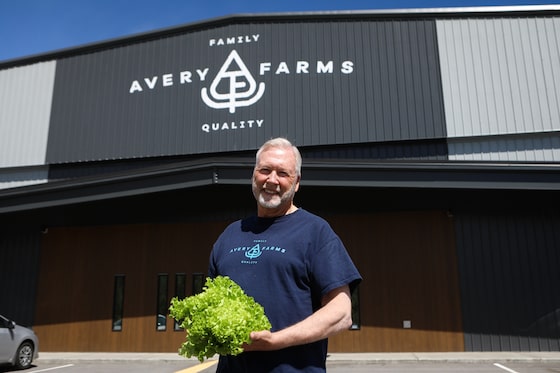In the shadows of glass-and-steel towers across Canadian cities, a quiet agricultural revolution is taking root. Stacked growing trays bathed in pink and purple LED lights are producing fresh greens year-round, regardless of the harsh winter conditions that have historically limited our domestic food production capacity.
This agricultural innovation—vertical farming—is rapidly emerging as a cornerstone in Canada’s strategy to strengthen food sovereignty and reduce dependence on imports. As climate change intensifies and supply chain vulnerabilities become increasingly apparent, these indoor growing operations offer a glimpse into a more resilient food future.
“We’re essentially weather-proofing our food system,” explains Dr. Lenore Newman, Director of the Food and Agriculture Institute at the University of the Fraser Valley. “Vertical farms can produce consistent yields 365 days a year while using up to 95% less water than conventional farming methods.”
The economic case for vertical farming has strengthened considerably in recent years. While startup costs remain substantial—typically between $10-15 million for commercial-scale operations—technological advances and energy efficiency improvements have begun driving down operating expenses. Several Canadian vertical farming enterprises have successfully attracted significant investment capital, with Toronto-based GoodLeaf Farms securing $65 million in funding to expand operations across the country.
What distinguishes vertical farming from earlier indoor growing attempts is the sophisticated integration of technologies. Modern facilities employ machine learning algorithms to optimize growing conditions, robotics to automate harvesting, and specialized LED lighting that can be precisely tuned to each crop’s photosynthetic requirements. This technological approach has enabled yields per square meter that can exceed traditional farming by factors of 10 to 15 times.
The environmental benefits are equally compelling. Beyond dramatic water conservation, vertical farms eliminate the need for pesticides and significantly reduce transportation emissions by enabling food production directly within urban centers. A recent analysis by CO24 Business found that greens grown in Canadian vertical farms can reduce associated carbon emissions by up to 80% compared to imports from California or Mexico.
Federal and provincial governments have taken notice. Agriculture and Agri-Food Canada recently announced a $50 million innovation fund specifically targeting controlled environment agriculture technologies. Meanwhile, Quebec has incorporated vertical farming into its provincial food security strategy, providing tax incentives for new facilities in urban areas.
Yet challenges remain. Energy consumption—particularly during winter months—represents both an environmental and economic hurdle. Critics also point to the limited crop diversity, as most commercial operations currently focus on leafy greens, herbs, and some berries. Staple crops like wheat, corn, and potatoes have proven more challenging to grow profitably in these systems.
Industry leaders are actively addressing these limitations. Calgary-based Vertical Harvest Farms has pioneered thermal energy recovery systems that capture waste heat from neighboring buildings, reducing their energy footprint by approximately 40%. Meanwhile, researchers at the University of Guelph’s Controlled Environment Systems Research Facility are developing protocols for a broader range of crops, including early successes with specialized tomato and pepper varieties.
Perhaps most importantly, vertical farming is reshaping how Canadians conceptualize agricultural space. With 90% of our population concentrated within 100 miles of the U.S. border, and prime farmland increasingly threatened by development, the ability to produce food in urban settings and on marginal lands represents a paradigm shift in agricultural planning.
“We’re witnessing the beginning of a complementary food system,” notes Michael Nickerson, Research Chair in Food Systems and Security at the University of Saskatchewan. “Traditional agriculture will remain essential, but vertical farming gives us a resilient secondary system that can function regardless of climate disruptions.”
As Canada navigates growing food security challenges documented in our Canada News section, vertical farming offers a promising technological approach to enhancing self-sufficiency. The question now facing policymakers, investors, and consumers: will we seize this opportunity to redefine our food landscape, or allow global competitors to lead the next agricultural revolution?










